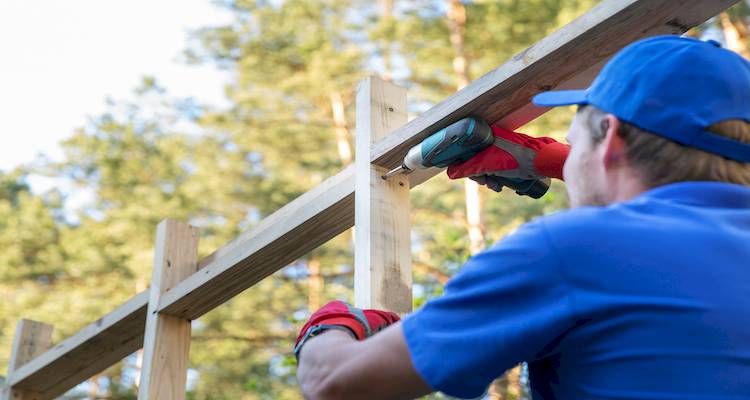How to Build a Summer House
If you'd like to learn how to build a Summer House, read our easy-to-follow guide below. It includes step-by-step instructions and images, as well as a tool list of everything you'll need.
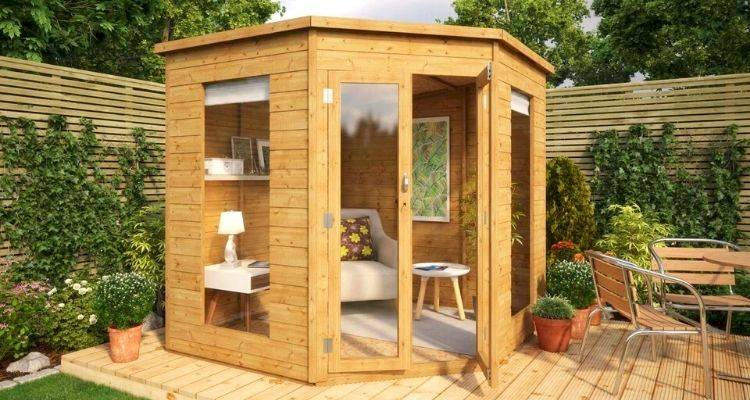
Table of Contents
- What is a Summer House?
- What Tools Do I Need to Build a Summer House?
- What Safety Equipment Do I Need to Build a Summer House?
- What Materials Do I Need to Build a Summer House?
- Planning Your Summer House
- Preparing to Build a Summer House
- How to Build a Summer House Yourself
- Types of Summer House
- How to Clean and Maintain a Summer House
- FAQs
- Sources
What is a Summer House?
A summer house is an outdoor structure that features doors and windows and can usually be found in gardens. They are most commonly made with timber and sometimes appear quite similar to a shed.
Summer houses are often used for entertaining in the garden or for relaxing. They also make great additional rooms such as an outdoor office, outdoor gym, or bar area.
The doors and windows on a garden summer house allow a lot of light to pour in, making them a very attractive place to chill out in – especially during sunny weather.
What Tools Do I Need to Build a Summer House?
Below is a list of the tools you’ll need to build a summer house:
- Spade
- Drill and drill bits
- Electric screwdriver
- Spirit level
- Hand saw
- Hammer
- Pencil
- Nail gun
- Electric saw
What Safety Equipment Do I Need to Build a Summer House?
This is a list of the recommended safety equipment that you will need to build a summer house:
- Safety glasses
- Ear protection
What Materials Do I Need to Build a Summer House?
Below is a list of the materials needed to build your summer house:
- Timber frame materials
- Screws
- Nails
- Clamps
- Wood treatment
- Clout nails
- Roofing felt
- Cladding materials
- Windows
- Doors
- Plywood pieces
- Fibreboard pieces
- Felt roof adhesive
Planning Your Summer House
Building a summer house is not a quick or easy job. There are many things that you’ll need to consider when planning to build a summer house. Below is a list of things you’ll need to consider when planning for this type of work:
Deciding on a Location
The location of your summer house is important. You’ll want to really consider this as it will be almost impossible to move the summer house once it’s been built.
Try to think about aspects such as the weather – do you want to sun shining into the summer house? You’ll need to think about the best position for your particular garden. The space where your summer house goes should also be as level as possible.
Thinking About Foundations
Again, it’s very important to consider the location in terms of the foundations. You need to choose ground that is fairly level or can easily be levelled out.
Consider what the ground is like – will it be easy to create the foundations needed on that particular patch of land, or should you choose somewhere else where the ground is more appropriate?
Choosing the Right Materials
While most summer houses are built using wood and timber, you can build other types of summer house such as a plastic summer house or metal summer house.
The materials you use will depend a lot on your budget, the type of aesthetic you’re going for, and what your summer house is intended to be used for.
Preparing to Build a Summer House
When preparing to build a summer house, you will need to start by choosing an appropriate location in your garden. It would be best if you find an area where the ground is quite level.
To begin preparing the land for your summer house build, you will have to start by digging out the area where the summer house is going to be placed.
Remove any plants, bushes, or turf from the area, dig out the top layer of soil, and make the surface level ready for building.
Once the surface is prepared, flat, and level, you should then lay a weed membrane down on the base.
How to Build a Summer House Yourself
Once you have prepared the base for your summer house via the steps above, you’re now ready to start the build. The steps below act as a guide on how to build the average wooden summer house.
However, every summer house is different, so you should refer to the manufacturer’s instructions or change steps as necessary to suit your particular build.
Step 1
The first step in building a summer house is to build the base. Create a frame for the base and then use structural timber to make it sturdy.
Use timber spars evenly spaced at around 30-40cm distance from each other and secure these to the frame using your drill and screws. Drill pilot holes first to prevent the wood from splitting.
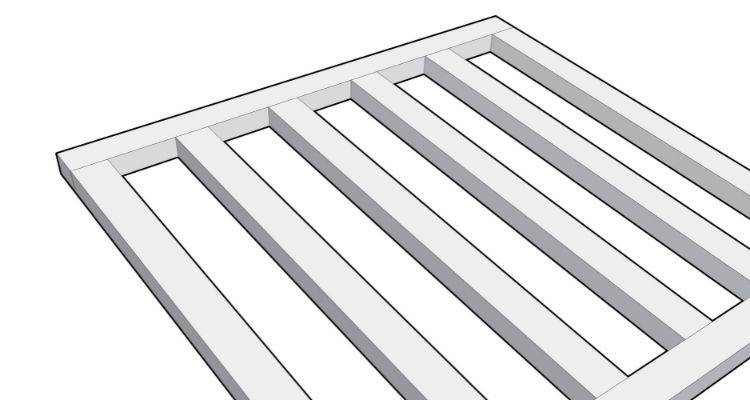
Step 2
Next, cut some braces with 45-degree mitre cuts and screw those to each corner to ensure the base stays square and remains structurally sound. If you are creating a large summer house, you may need to create two bases and fit them together.
These can be fitted together using clamps. The base can then be placed onto the weed membrane. It should be raised on bricks to prevent it from rotting. Once in position, use a spirit level to ensure that it is level.
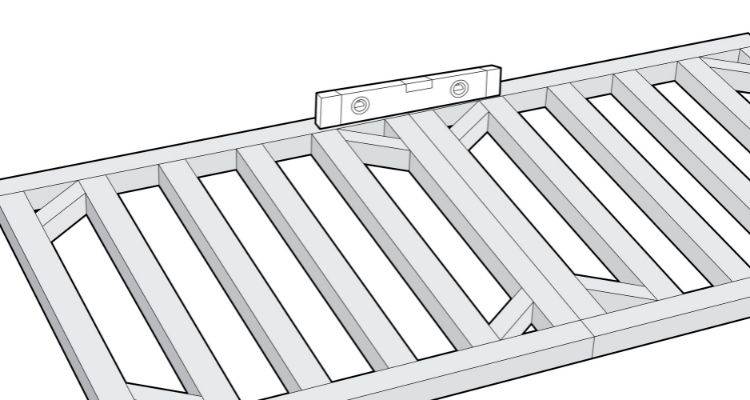
Step 3
Once you’re happy that the base is level, use a protective wood treatment and paint over the base to protect it on all sides.
After the treated base is dry, you can then start using timber to build the frame for the summer house walls. You want to use your base as a frame and line up pieces of wood to the base.
If the wood you have is too long, cut it to size using a hand saw. Add timber spars in the same way that you did with the floor base. Connect the pieces using a hammer and nails. This will act as the back side of the summer house.
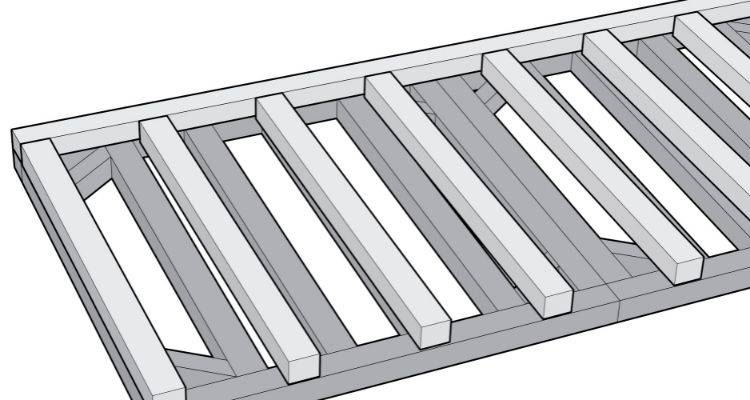
Step 4
Next, you want to create a pitched roof. Create your frame in the same way as the walls. Then, mark 1900mm from the bottom for the lowest part of the roof and place a large batten on the inside of the 1900mm pencil line and angle it towards the centre spar.
It’s a good idea to mark the centre spar with a ‘c’ so that it can easily be identified.
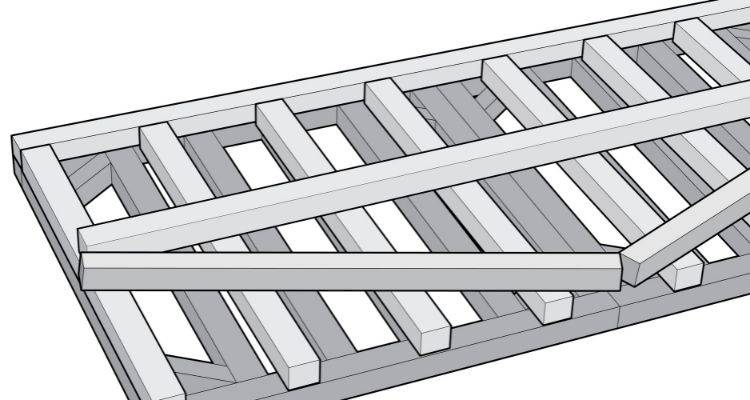
Step 5
After finding the centre spar, line it up with the opposite 1900mm side and top of the centre spar and draw on the inside where it lies on each spar. Repeat this on the other side and then cut along the pencil lines using a hand saw to create the angled roof.
To add the top piece, you’ll need a mite cut to match the roof. Hold one of the lengths up to the edge of the centre spar and run your hand saw along the straight edge. This will naturally create the mitre that you need. Repeat this step for the opposite side.
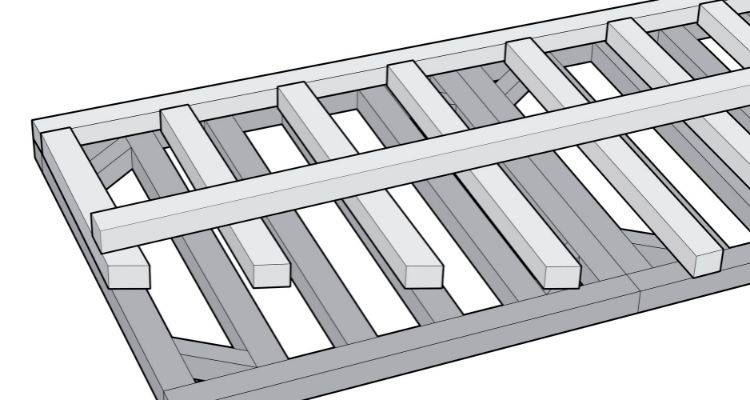
Step 6
The mitre cuts should now perfectly join together. Join them together and drill and screw them to each spar, securing them in place. Once you get to the overhang, simply saw these pieces off.
Next, you want to create the front side of the summer house. Use your first wall frame as a guide and line up the timber exactly the same way as the back frame.
Temporarily nail the pieces of timber to the original frame to hold them in place if you wish – this might make it easier to keep everything exactly lined up.
Mirror the original frame, except this time you want to screw the top sloping roof section to the bottom roof section.
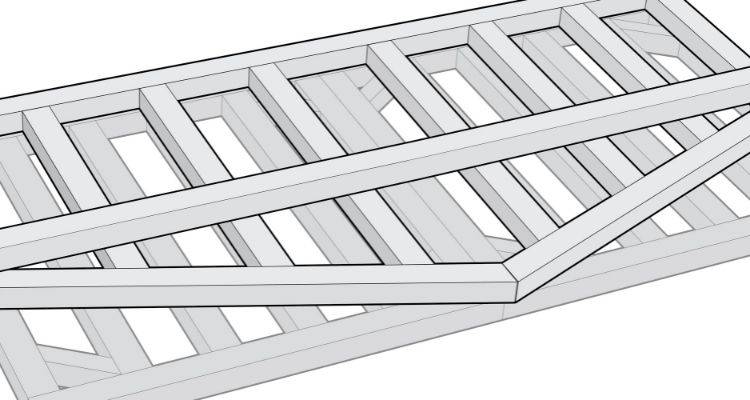
Step 7
Once the top and bottom are matching, you can then line up another spar along the sides, hold a straight edge against it and draw underneath where it lies to get your new cutting line. Saw the timber at these cutting lines and then pre-drill and screw the pieces together.
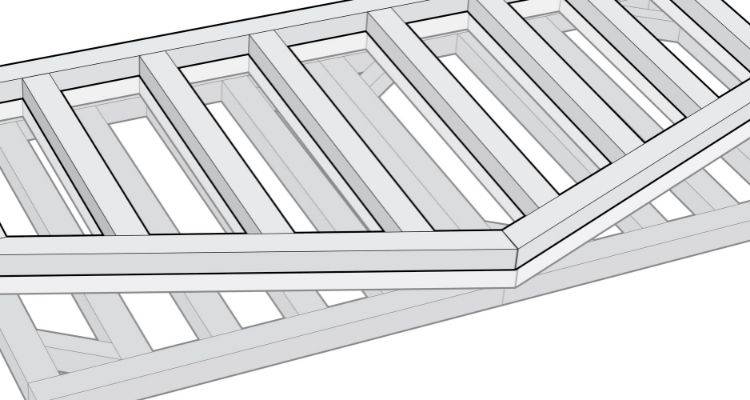
Step 8
As this is the front piece, you want to figure out where you’re fitting the windows and doors before putting the spars in. Measure the width and height of all of the doors and windows to fit them in. Add around 5mm to each of the measurements so that the fits aren’t too tight.
For the doors, work out the halfway point on the frame and split it equally along the bottom. Put pencil markings at these points. Put a straight edge across to get the same equal measurement along the top.
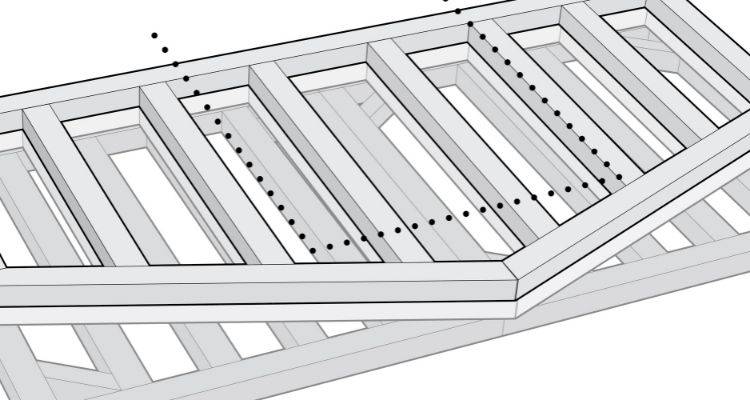
Step 9
Once you’ve found and marked the positioning of the door. Create pilot holes and screw your spars accordingly around the door gap. Continue fitting your spars along with 30-40cm gaps, the same as you did before but remember to leave a gap where your windows will be placed.
When you come to the window sections, place your windows in situ and attach some horizontal timber bars and extra supports around them to create your window frames. The same needs to be done for the door as well.
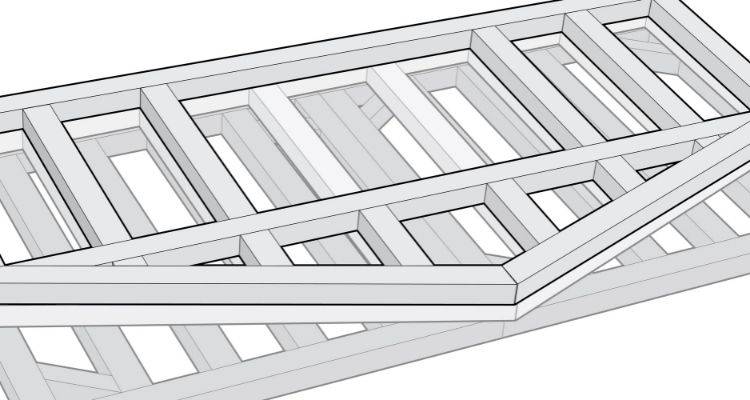
Step 10
Once your front framework is done, you can then move on to creating the side frames. Start again by stacking the timber on top of the original frame to get the outline. However, the side pieces may be shorter if your summer house is a rectangular shape.
If that’s the case, you will need to take measurements of the sides of the base and cut your side frames to size accordingly.
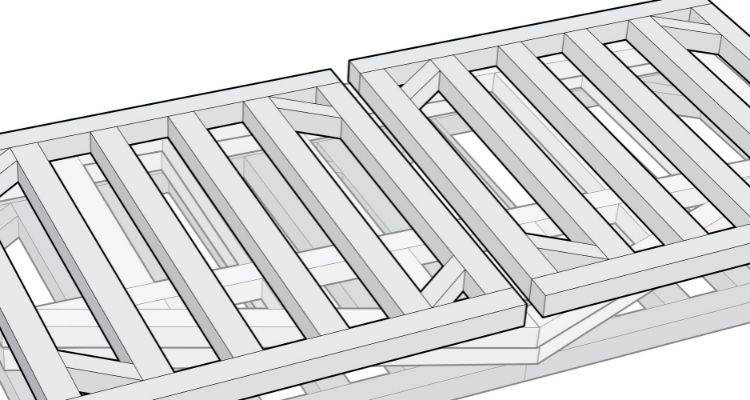
Step 11
Once you have the outline of your side piece, fit spars at 30-40cm intervals the same as before. Repeat this step to create both side frames of the summer house.
If you plan on incorporating any other windows or doors on the side of the summer house, be sure to leave room for those and create frames in the same way as the previous windows and doors.
Create some more mitre cut pieces using cut-offs of timber and fit these into the corners of the remaining frames to ensure everything stays secure and remains square.
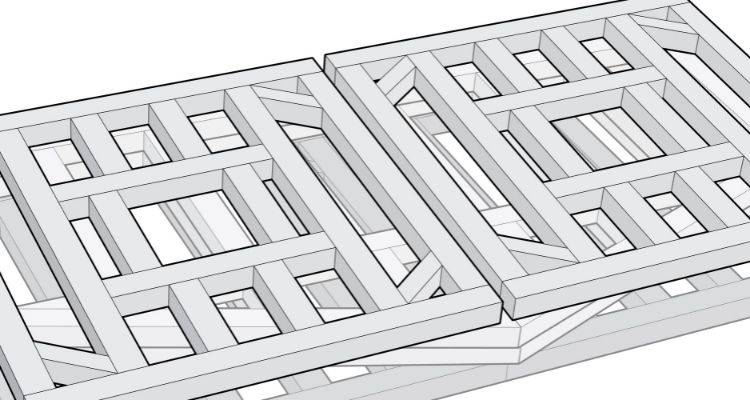
Step 12
Next, create the bottom frame for the roof. Do this by creating a frame in the same way as before by lining the timber up on top of the front and back frames.
The difference with the roof is that you want to leave a slight overhang, so it should be slightly longer than all of the other pieces all the way around. Fix spars to this frame in the same way as the other frames.
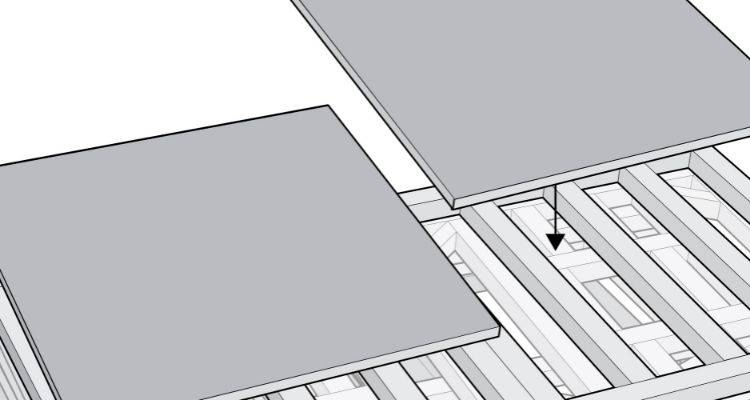
Step 13
Now that all of your frames are complete, you can then add the cladding to your frame. The process for this will depend on the type of cladding or wall materials that you are using.
However, most commonly, this would involve fixing plywood to each of the frames and securing it with screws. This creates the walls for your summer house. Treat all of the sides with a wood preserver and set the pieces aside while working on each new section.
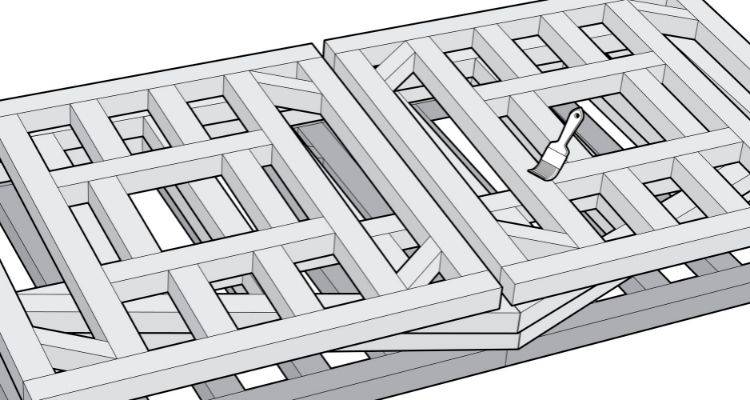
Step 14
Next, use your wood cladding pieces to create the decorative finish on the outside of the summer house. Use a nail gun to fit each of these pieces to the frame. You may need to cut some pieces to size, particularly where the windows and doors are going to be placed.
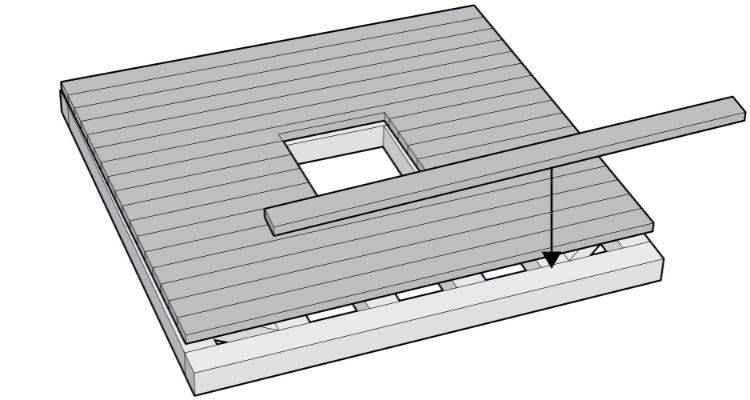
Step 15
Once all the walls are prepared, you need to create a notched space for the roof to sit on and not move. Use a strip of wood and set it back to the depth of the structural timber and then the pilot hole and screw it on in several places. Repeat this step on each side of the roof and attach battens on each side to create the notch.
Next, apply a wood preserver to all remaining parts that haven’t already been treated. Set all of these pieces aside while you work on the base.
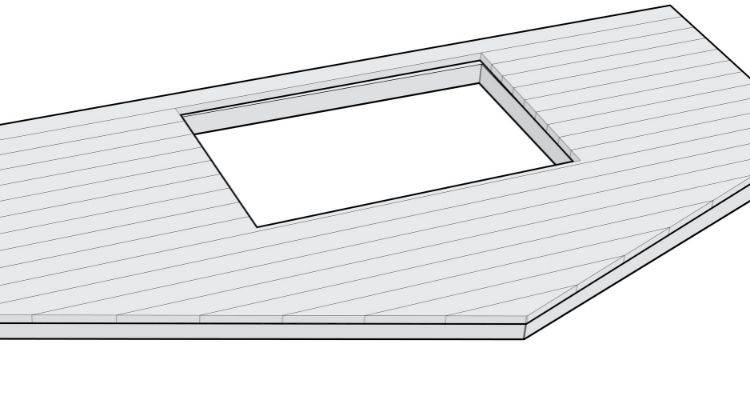
Step 16
Set the base back on the weed membrane and clamp any parts together that need to be attached. You can now screw these separate pieces together. To prevent any weaknesses, pack as many gaps as you can see with treated wood.
Next, you will need to ply-line the base. Screw plywood to the base with screws along each of the spars to ensure the flooring pieces are completely secure.
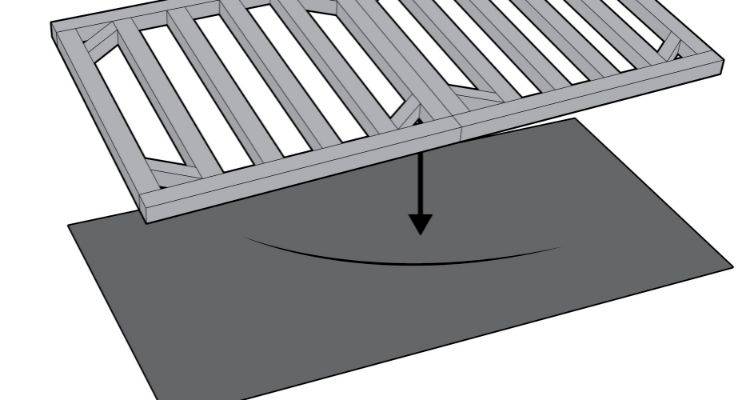
Step 17
Next, ask someone to prop up the back piece on top of the base where it needs to be secured. Then, ask someone else to hold up the side piece in line with the back piece and screw these two parts together where they join at the corner.
Repeat this step for the opposite side and then do the same for the front wall. Once each wall is in position, screw them all down to the base.
Next, insert the windows and doors and attach them according to the manufacturer’s instructions.
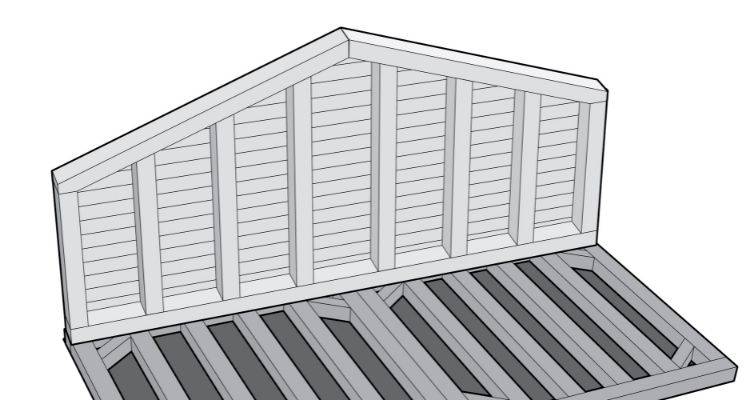
Step 18
Next, nail strips of OFB to the framework of the roof. Then, roll out strips of felt over the OFB and clout nail the felt into the frame. At the corners, create a blanket fold and nail the felt into position. Use adhesive on any overlapping sections.
You should then put the roof onto the structure and screw each of the separate roof pieces together. Then, also screw the frame onto the cladding and wall sections to ensure it’s completely secure.
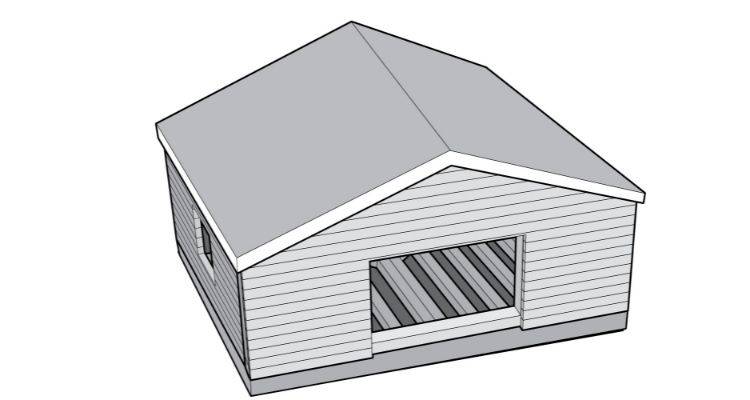
Step 19
Once you’ve completed the summer house and all windows, doors, and the roof are fitted and secured, you can then paint or stain your summer house as require and add any décor as desired to the interior.
You can then add your summer house furniture, and the job is complete.
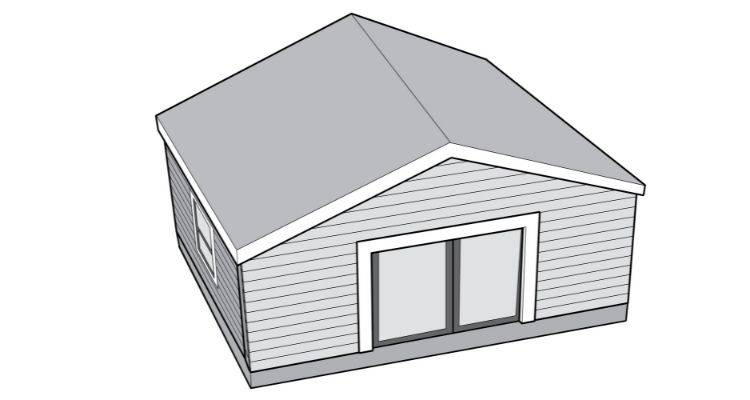
Types of Summer House
There are several different summer house designs. Below is a list of some popular summer house designs and some information on each type:
Contemporary Summer House
A contemporary summer house is a very modern design that is becoming increasingly popular. This type of summer house tends to feature large windows and doors that allow a lot of natural light to pour in.
A contemporary summer house is perfect for homeowners who want to create a very modern aesthetic in their garden.
PROS
✔ Modern aesthetic
✔ Lets a lot of light in
✔ Popular design
CONS
✖ It may take up a lot of room
Traditional Summer House
A very popular type of summer house is a traditional summer house. This type of summer house usually features Georgian windows and is most often built with an apex-shaped roof.
Traditional summer houses are best suited to those who want to create a traditional theme in their garden. It would also go well alongside a period home.
PROS
✔ Traditional aesthetic
✔ Popular design
✔ Cosy feel
CONS
✖ It may be difficult to build
✖ It may take up a lot of room
Corner Summer House
If you have a small garden, then a corner summer house may just be the perfect choice for you. It can sometimes be difficult to find the room to place a summer house, and they are often quite big.
A corner summer house is designed specifically to fit snugly into a corner, meaning they take up less room than a normal summer house. These summer houses tend to feature double doors at the front and two side windows, giving you a panoramic view of your garden.
PROS
✔ Small summer house
✔ Compact design
✔ Panoramic view of the garden
✔ Don’t take up too much room
CONS
✖ Sometimes quite small
How to Clean and Maintain a Summer House
Below is a list of things that you should do to clean and maintain your summer house:
- Sweep and dust the inside regularly
- Clean the glass in the windows and doors with glass cleaner and a soft cloth
- Re-paint or stain your summer house roughly every 2-3 years or sooner if needed
- Inspect your summer house regularly to check for damage
- Fix any problems with the summer house quickly to avoid them getting worse
FAQs
How do you make summer house doors?
Use smaller pieces of wood to create a brace for the door. These should be nailed around all four sides of the door and across the middle. If you are putting a window in the door, you will need to cut the opening and create a frame for the glass.
Then, insert the glass into place and apply some sealant to secure the glass. You can then attach the handle and hinges to the door and fit it into the frame.
How do you insulate a summer house?
There are several different methods for insulating your summer house. You can install it between the base and the floorboards, add insulation to the roof frame, or install installation boards to the walls.
You may also want to consider adding sealant and draught-proofing all of the windows and doors to help keep the heat in. An insulated summer house will provide you with a great place to relax all throughout the year.
What can a summer house be used for?
However, it can be used for many things such as a summer house shed, a playroom, an outdoor office, a gym, or even a bar. Try searching online for summer house ideas to get a little bit of inspiration for your own summer house.
What is the most popular type of summer house?
How much does it cost to build a summer house?
A small, cheap summer house could cost as little as £500, whereas a more extravagant larger summer house could end up costing over £10,000.
Sources
https://www.cranegardenbuildings.co.uk/articles/what-is-a-summerhouse
https://www.youtube.com/watch?v=coJRC9IFtDg
https://www.youtube.com/watch?v=OAF4xyesZ6M
https://www.youtube.com/watch?v=AKdsOIh24eo
https://www.lugarde.com/how-to-build-a-summer-house
https://gilliesandmackay.com/how-to-insulate-a-shed






